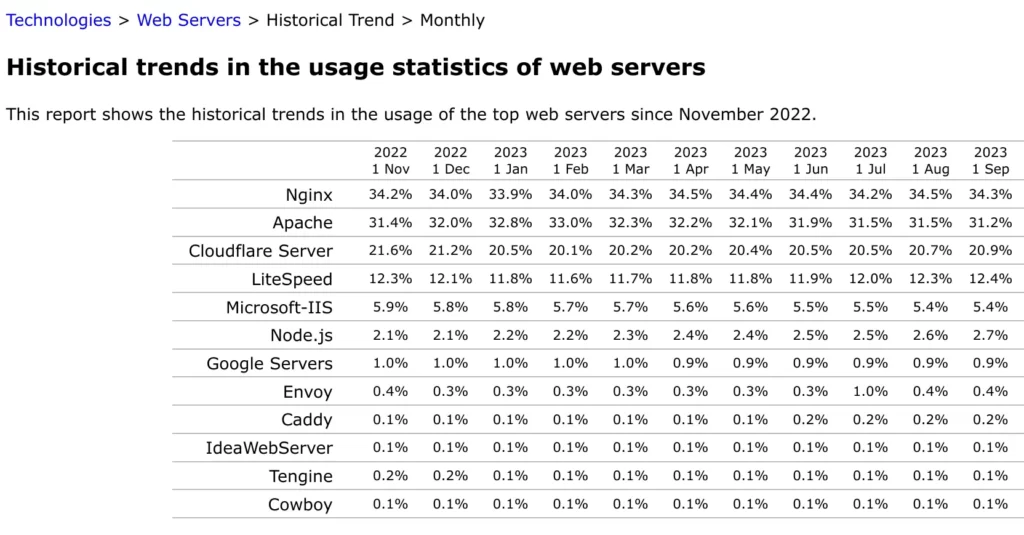Have you ever wondered how websites load so fast, even when visited by thousands of users at the same time? The secret behind this is often a powerful piece of technology called Nginx.
A decade ago, there was a problem handling 10,000 concurrent visitors called the C10K problem. Nginx solved this problem with its event-driven, asynchronous architecture; it handles multiple requests simultaneously rather than running a separate process for each request. This is how it handles thousands of connections at the same time.
Now let’s move on to our main topic: What is Nginx server? and how it works.

Table of Contents
What is Nginx Server?
Nginx (pronounced “engine-x”) is a popular and high-performance open-source web server software for reverse proxying, caching, load balancing, and more.
In 2002, Igor Sysoev (the creator) started developing Nginx in response to the C10K problem, and then it was publicly released in 2004. In 2011, Igor Sysoev founded NGINX, Inc. with co-founders Maxim Konovalov and Andrew Alexeev.
Now Nginx is the most popular web server on the market. As of October 2023, Nginx is used by 34.2% of all the websites, according to W3Techs.

It’s known for its speed, efficiency, and versatility in handling web traffic. Nginx was developed to address the limitations of traditional web servers like Apache and has become a critical component of modern web hosting infrastructure.
How Does Nginx Work?
When someone clicks on a link to visit a webpage, the browser contacts the web server of that site. Then the server looks for the requested files and pages and delivers the results to the browser. This way, a web server processes a request. This example is considered a single thread.
A traditional web server generates a single thread for every request, but the Nginx server works in a unique and efficient way.
Nginx has worker processes and master processes; worker processes do the actual processing of requests, and master processes read and evaluate configuration and maintain worker processes.
Nginx manages similar threads under one worker process, and each worker process has smaller units called worker connections, which handle simultaneous connections. Worker connections send requests to a worker process, which will also deliver them to the master process. Then the master process provides the result of those requests.
It’s worth mentioning that one worker connection can handle up to 1024 connections simultaneously. Because of this, the Nginx server can handle thousands of connections without any difficulties. Therefore, it has become the most popular and fastest web server.
Pros and Cons of Nginx
Nginx is a popular web server and reverse proxy server known for its speed, performance, and versatility. Like any technology, it has its pros and cons, which depend on specific use cases and requirements. Here’s a breakdown of the advantages and disadvantages of Nginx:
Pros of Nginx
- High Performance: Nginx is designed for high performance and can efficiently handle a large number of concurrent connections with low resource usage. It's well-suited for delivering web content quickly.
- Load Balancing: Nginx can act as a load balancer, distributing incoming traffic among multiple application servers to improve performance and scalability.
- Reverse Proxy: It serves as a powerful reverse proxy server, forwarding requests to application servers, which can be especially useful for hosting multiple websites or applications on the same server.
- Caching: Nginx can cache static and dynamic content, reducing the load on application servers and speeding up content delivery to users, enhancing website performance.
- Security Features: Nginx offers various security features, including DDoS protection, SSL/TLS termination, access control, and the ability to block malicious requests. It helps protect websites and applications from security threats.
- Minimal Resource Usage: Nginx consumes less memory and resources compared to other server software.
- Compatability: It's compatible with several applications, including Joomla, Python, and Ruby.
Cons of Nginx
- Although Nginx is open source, it provides limited control over its modules.
- Nginx software's reliance on a single configuration file results in less flexibility when compared to Apache.
Conclusion
Nginx is the most popular web server software that improves your website’s performance, scalability, and security. It helps you handle thousands of concurrent connections without sacrificing performance.
If your top priority is speed, then the Nginx server is the right choice for you.
Read More: What is LiteSpeed Web Server? All You Need to Know


